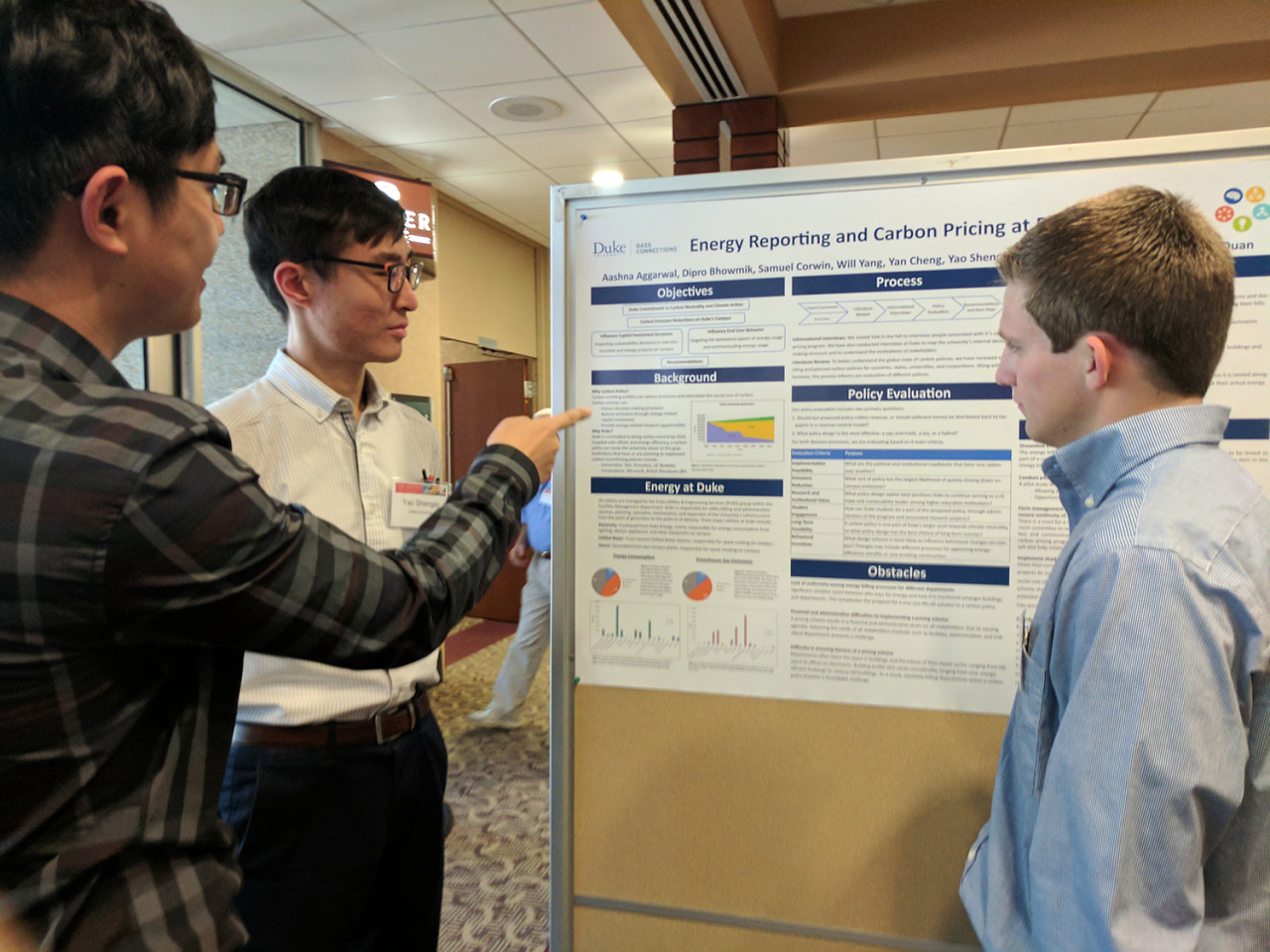Shengjie Yao

Our project gave us a much deeper understanding and appreciation for how policy changes can help move us in the right direction for environmental conservation.
Degree
Economics and Psychology ’19Project Team
When my group first started our Bass Connections project we all thought that the project will be very statistics based, so much so that we considered submitting a proposal to Data+ for statistical analysis. The common perception was that energy and environment projects were data-driven—out of the 8 Bass Connections teams in the Energy theme, only 2 are policy-based, the rest being more focused on tangible solutions in the form of new technology and applications of them. We pivoted the focus of our project several times as we worked on the best solutions, and it was only halfway through the second semester that we shifted to a less quantitative and more qualitative focus. Thanks to our team leads, we signed up to present our progress at the annual State Energy Conference.
The State Energy Conference of North Carolina, held from April 11 to 12 in Raleigh, “provides actionable insights into the business of energy” and brought various stakeholders together for conversations on energy technology, policy and finance. We were fortunate enough to be able to showcase the progress of our project there along with many others, and to exchange insights about energy management and technologies with other groups. Plus, it was a chance to visit Raleigh again, something I haven’t done since freshman year. There were multiple Duke groups around showcasing their projects as well, so we also learned more about what other teams were doing.
I noticed during my tour of the poster exhibition hall in a bid to find the drinks counter, that we were the only group presenting on energy policy. There were many posters on cool new technologies and processes; they were easily identifiable because they had more Greek alphabets than Roman ones on them. There were also many pretty pictures taken from drones showing these new technologies at work. Our poster, on the other hand, had none of those, save for a diagram we had put together using PowerPoint. It was a stark contrast to the pictures of ocean buoys which the team next to us (also from Duke) had on their poster. I pointed it out to my team members, to which they also expressed surprise.

Perhaps one big takeaway from this conference was that we have to start paying more attention to environmental policies if we truly want to make a difference in environmental conservation. Often we see heavy emphasis on new technologies and processes that helps us become more environmentally friendly, but merely inventing better ways to protect our environment is not enough; we need to implement them and have the will to change what we are currently doing to truly make a difference. Our project gave us a much deeper understanding and appreciation for how policy changes can help move us in the right direction for environmental conservation. Because not only do we need to have tools to better protect the environment, we need to find ways to use them. Maybe we should write a policy to install electricity-generating buoys in the lake…
